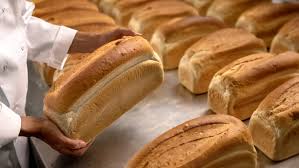The world of baking and pastry is evolving at an exhilarating pace. Today’s Puratos bakers are not just mixing flour, sugar, and butter; they are crafting edible art while embracing innovation and sustainability. As consumers become more health-conscious and environmentally aware, the demand for creative ingredients has skyrocketed. This shift paves the way for exciting trends in baking that go beyond traditional recipes.
From plant-based alternatives to gluten-free flours, innovative ingredients are reshaping how we think about baked goods. Pastry chefs now have a treasure trove of options to explore. The rise of artisanal chocolates also adds another layer of creativity, as makers seek out sustainable practices that appeal to modern palates.
Join us on this journey through the changing landscape of baking where each ingredient tells a story—one that intertwines flavor with responsibility while delighting our taste buds!
Innovative Baking Ingredients: From Plant-Based Alternatives to Gluten-Free Flours
The world of baking is evolving rapidly, embracing innovative ingredients that cater to diverse dietary needs and preferences. Plant-based alternatives are at the forefront, offering exciting options for those seeking healthier or vegan choices. Ingredients like aquafaba—a chickpea brine—have gained popularity as an egg substitute, providing moisture and stability in baked goods.
Gluten-free flours have also transformed traditional recipes. Almond flour, coconut flour, and oat flour bring unique flavors and textures to pastries while appealing to gluten-sensitive consumers. These alternatives enhance not just taste but nutritional profiles too.
Creative Pastry Recipes: Incorporating New Ingredients and Techniques
The world of pastry is evolving, inviting bakers to experiment with fresh flavors and textures. Innovative ingredients like aquafaba, a chickpea liquid, can replace eggs in meringues or mousses. This opens up new avenues for plant-based desserts.
Consider using alternative sweeteners like monk fruit or agave syrup to enhance health-conscious recipes. These provide distinct taste profiles while minimizing sugar content.
Incorporating techniques such as sous vide cooking can elevate custards and creams, resulting in smooth textures that traditional methods may not achieve.
Don’t overlook the beauty of fusion cuisine; combining cultural elements creates unique pastries that surprise the palate. Matcha-infused croissants or chai-spiced éclairs are just two examples of what’s possible when creativity meets technique.
By embracing new ingredients and methods, bakers can redefine classics while catering to diverse dietary preferences without compromising flavor or presentation.
The Rise of Chocolate Trends: Artisanal, Health-Conscious, and Sustainable Options
Chocolate has evolved far beyond a simple treat. Today, the focus is on artisanal craftsmanship. Small-batch producers are experimenting with unique flavor profiles and sourcing beans from specific regions. This attention to detail creates rich varieties that tell a story.
Health-conscious options are also gaining traction. Consumers seek chocolate with reduced sugar content or enriched with superfoods like quinoa or spirulina. Dark chocolate remains popular for its antioxidants, appealing to those who prioritize wellness without sacrificing taste.
Sustainability plays a crucial role in today’s market as well. Many brands now emphasize ethical sourcing practices, ensuring fair trade for farmers and eco-friendly production methods. As awareness grows, consumers increasingly support companies committed to environmental responsibility.
These trends reflect broader shifts in consumer preferences—where indulgence meets mindfulness—and highlight the evolving landscape of chocolate enjoyment.
Sustainability in the Food Industry: How Bakeries and Pastry Shops Can Make a Positive Impact
Sustainability is more than a buzzword; it’s becoming essential in the food industry. Bakeries and pastry shops are uniquely positioned to lead this change.
By sourcing local ingredients, they can reduce transportation emissions and support nearby farmers. This fosters community relationships and enhances freshness in every bite.
Waste reduction practices also play a crucial role. Implementing programs that recycle packaging or donate unsold goods helps minimize landfill contributions.
Energy-efficient appliances can significantly lower carbon footprints while saving on utility costs. Many businesses are now turning toward renewable energy sources for their operations.
Conclusion
As we navigate the evolving landscape of baking and pastry, innovation is at the forefront. Embracing new ingredients like plant-based alternatives and gluten-free flours not only meets diverse dietary needs but also sparks creativity in our kitchens. The introduction of creative recipes inspires bakers to think outside the box, incorporating these novel components into their creations.








